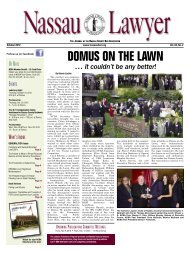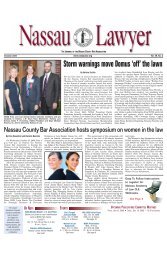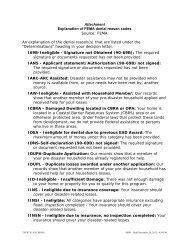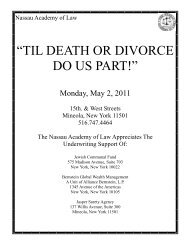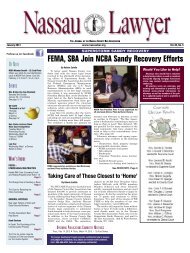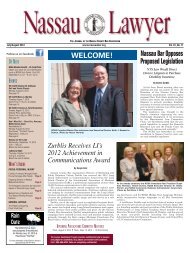FRAUDULENT CONVEYANCES Nassau Academy of Law CLE Live ...
FRAUDULENT CONVEYANCES Nassau Academy of Law CLE Live ...
FRAUDULENT CONVEYANCES Nassau Academy of Law CLE Live ...
You also want an ePaper? Increase the reach of your titles
YUMPU automatically turns print PDFs into web optimized ePapers that Google loves.
Ponzi Schemes. If investor received back funds that exceed the principal investment,then e these amounts are avoidable transfers by the debtor to the investors. Funds receivednot in excess <strong>of</strong> original contribution are generally safe assuming the investor acted in goodfaith without knowledge <strong>of</strong> the Ponzi scheme or any financial trouble <strong>of</strong> the debtor.Since the trustee need only show intent to hinder, delay or defraud, a Ponzi scheme, bydefinition meets the standard. Usually trustee can only recover “fictitious pr<strong>of</strong>its” underconstructive fraud theory but may be able to recover returned principal as well if shown thatinvestor did not act in good faith based on investor’s knowledge <strong>of</strong> the fraud.Marital Distributions. State divorce court approval (even subsequent) as part <strong>of</strong> regularlyconducted divorce proceeding, absent evidence <strong>of</strong> collusion , conclusively establishedreasonably equivalent value. In re Zerbo (2008, 397 B.R. 642Burden <strong>of</strong> pro<strong>of</strong> on party asserting fraudulent transfer by preponderance <strong>of</strong> the evidenceTerms:Transfer: Defined under Section 101(54) as (a) creation <strong>of</strong> a lien; (b) retention <strong>of</strong> title assecurity; (c)foreclosure <strong>of</strong> right <strong>of</strong> redemption;(d) each mode, direct or indirect, absolute orconditional, voluntary or involuntary, <strong>of</strong> disposing or parting with (i) property; or (ii) aninterest in property. In other widest it is interpreted broadly to include ever grant <strong>of</strong> propertyor an interest therein.Insolvency: balance sheet analysis. Liabilities are greater than assets. Under 548 exemptassets are not included in the analysis, neither are contingent liabilities carried at full valuebut are discounted by the probability <strong>of</strong> the contingency. UFCA defines as “present fairsalable value <strong>of</strong> his assets is less than the amount that will be required to pay his probableliability on his existing debts as they become absolute and matured.Solvency is balance sheet analysis• Court did not include in balance sheet analysis a tort victims as yet unliquidated, not‐sued‐upon,and unmatured claim for abuse as it was not yet a debt. Shelly v. Doe 1997, 173 Misc.2d 200,660 N.Y.S.2d 937, Affirmed as modified 249 A.D. 756, 671 N.Y.S. 2d 803Reasonably Equivalent Value: Not defined under the Code. UFCA uses the term “”fairconsideration”. Always determined on a case by case basis and is generally a matter <strong>of</strong>equity.Payment under a guarantee giving by debtor not fair consideration if underlyingGuarantee can be avoided as fraudulent obligation. Nirvana restaurant, Inc., 2006, 337 B.R.495



